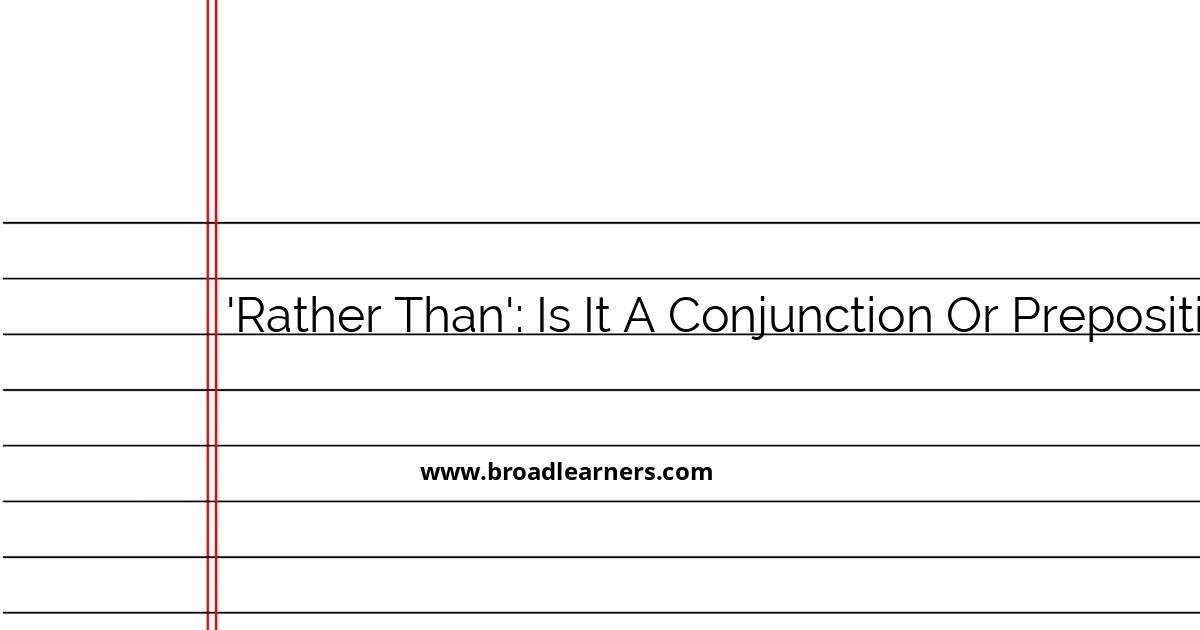The phrase 'rather than' often comes up in English grammar, and there's some confusion about whether it acts as a conjunction or a preposition. Understanding its role can help improve both writing and comprehension skills. In this explanation, we'll dissect 'rather than' in detail, providing examples to clarify its usage.
Understanding 'Rather Than'
The phrase 'rather than' serves both as a conjunction and a preposition, depending on the context in which it is used. Its primary function is to show preference or choice between two options or actions. Here’s a detailed explanation of both roles:
- 'Rather Than' as a Conjunction
-
When acting as a conjunction, 'rather than' connects two clauses or ideas. It positions itself between two elements that are grammatically parallel, which often makes it interchangeable with the word 'instead'.
Examples of Conjunction Usage
Example 1: She decided to read a book rather than watch TV.
In this sentence, 'rather than' connects two verbs - 'read' and 'watch', indicating the preference for reading a book over watching TV.
Example 2: We will hike up the mountain rather than take the cable car.
Here, 'rather than' joins the activities 'hike' and 'take', expressing the choice to hike instead of taking the cable car.
- 'Rather Than' as a Preposition
-
As a preposition, 'rather than' connects a noun or a verb with an alternative, emphasizing preference without needing a complete clause or sentence structure.
Examples of Preposition Usage
Example 1: He prefers tea rather than coffee.
In this case, 'rather than' functions as a preposition connecting two nouns, 'tea' and 'coffee'. The preference is clear without the need for a complete clause after 'rather than'.
Example 2: She enjoyed music rather than dance.
The phrase 'rather than' connects the nouns 'music' and 'dance' as alternatives, showing preference for music.
Tips for Using 'Rather Than'
- Ensure that the elements connected by 'rather than' are grammatically parallel, especially when used as a conjunction.
- Remember that as a preposition, 'rather than' will often link nouns or gerunds, whereas as a conjunction, it can link verbs or clauses.
By understanding the dual role of 'rather than', you can use it correctly in various grammatical structures. This flexibility gives it a nuanced place in English, highlighting choices and preferences intelligently.

Did I miss anything? Respond below